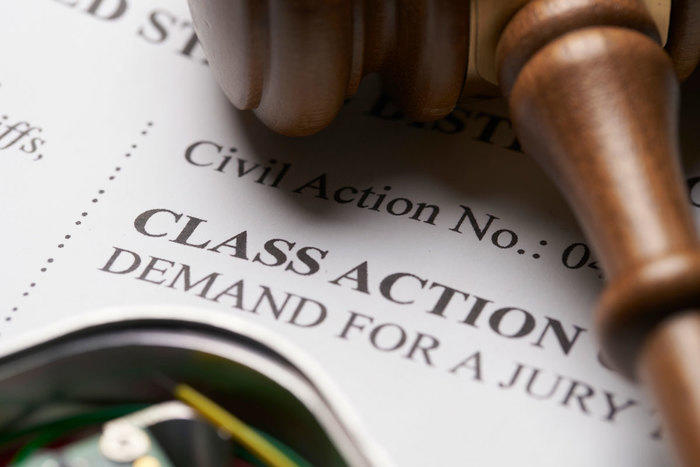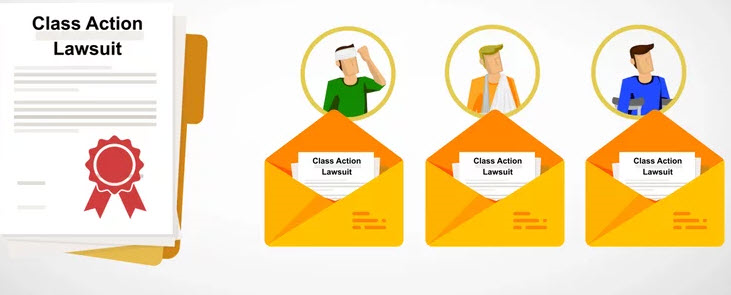Collective Justice: The Power and Refine of Class Action Lawsuit Claims
Collective Justice: The Power and Refine of Class Action Lawsuit Claims
Blog Article
Recognizing Course Action Suit: A Guide for Attorney
Course action legal actions have actually become an integral component of the legal landscape, allowing for the consolidation of multiple cases into a single activity. For legal representatives, recognizing the intricacies of class action lawsuits is crucial in effectively representing their clients. This detailed overview explores the fundamentals of class action lawsuits, from recognizing prospective class participants to navigating the certification process. Furthermore, it looks into crucial methods for taking care of course activity lawsuits and provides understandings right into discussing and obtaining authorization for negotiations. By diving right into the complexities of class action suits, this guide outfits attorneys with the understanding and tools needed to successfully browse this complex area of regulation.
The Basics of Course Action Legal Actions
Course action lawsuits are a legal device utilized to settle similar insurance claims from a team of people into a single claim, supplying a effective and cost-effective method to seeking justice and resolution. This sort of lawsuit permits a depictive plaintiff, acting on part of the whole course, to bring an insurance claim versus an accused that has apparently caused damage or went against the civil liberties of several individuals.
The standard needs for bringing a class action claim include numerosity, commonness, typicality, and adequacy of depiction. Numerosity refers to the fact that the class should be so large that joinder of all members would certainly be unwise. Commonness suggests that there must prevail questions of legislation or truth that are shared by all participants of the class. Typicality requires that the insurance claims of the representative complainant are regular of the insurance claims of the whole class. Competence of depiction makes certain that the depictive plaintiff will appropriately represent the passions of the whole course.
Class action lawsuits can be useful for both defendants and plaintiffs. For plaintiffs, it allows them to merge their sources and share the dangers and prices related to litigation. It also provides a degree playing area when they are up against big companies or entities. For offenders, it supplies the chance to effectively solve numerous cases in a solitary suit, staying clear of the need to resist many individual claims.
Identifying and Assessing Possible Class Participants
After developing the standard needs for a class action claim, the next action is to identify and examine potential class members. If they fulfill the needed standards., this process involves identifying who might be component of the course and reviewing their insurance claims to figure out.
To recognize possible course members, attorneys normally conduct comprehensive research study and gather relevant details. This might entail reviewing papers, carrying out meetings, and analyzing records to determine people or entities that may have been impacted by the supposed misbehavior. It is essential to establish a clear and detailed listing of potential class members to make certain that all influenced events are included in the legal action.
When possible class members have actually been identified, the next step is to evaluate their insurance claims. This includes assessing the values of each specific case to figure out if they meet the legal demands for class certification. Legal representatives have to meticulously examine the realities, proof, and lawful concepts of each prospective course member's insurance claim to make sure that they have a viable case.
Evaluating prospective course participants additionally includes figuring out whether they fulfill the course definition and have actually experienced similar damage as a result of the offender's activities. This calls for comparing the truths and circumstances of each potential class participant's circumstance to the accusations and lawful theories put forth in the claim.
Browsing the Class Accreditation Refine
To efficiently navigate the class certification process, lawyers have to vigilantly follow the step-by-step requirements established forth by the court. Class certification is a crucial step in a course activity suit, as it identifies whether a case can proceed as a class activity, standing Class action lawsuit for a team of individuals that have comparable claims against an accused. The process includes pleasing certain criteria, such as numerosity, commonality, typicality, and competence of representation.
Firstly, attorneys must develop numerosity by demonstrating that the class is so large that individual joinder is impractical. This can be accomplished via proof or specialist testimony. Secondly, they must establish commonality by showing that there are typical concerns of law or truth that predominate over specific issues. This needs an extensive evaluation of the insurance claims and defenses included.
Next, attorneys have to show typicality, which indicates that the representative complainant's cases are common of the claims of the class members. This ensures that the interests of the representative complainant align with the rate of interests of the course. Finally, attorneys have to demonstrate competence of representation, implying that the representative complainant and their guidance will fairly and properly represent the rate of interests of the class.
To navigate this process efficiently, lawyers should thoroughly prepare by performing considerable research study, gathering evidence, and creating a compelling argument that satisfies each of these standards. They have to also be prepared to react to any kind of arguments or challenges elevated by the defendant. By faithfully adhering to the step-by-step needs established forth by the court, legal representatives can raise their opportunities of getting course qualification and advancing the passions of the course participants.

Secret Methods for Handling Course Activity Lawsuits
Upon successfully browsing the course accreditation process, legal representatives must after that execute essential techniques for effectively handling course activity litigation. These approaches are essential to make sure that the situation proceeds smoothly and effectively, eventually making best use of the chances of a beneficial outcome for the class members.
One trick method is to establish a natural and strong lawful group (Class action lawsuit). This includes constructing a team of lawyers with expertise in course activity lawsuits, in addition to other appropriate locations such as the details market or topic associated with the case. A well-rounded team can bring various perspectives and abilities to the table, improving the general effectiveness of the litigation
One more important approach is to develop a thorough and well-thought-out lawsuits strategy. This strategy should describe the general purposes of the instance, as well as the particular lawful theories and disagreements that will be gone after. It needs to likewise include a timeline and budget to guarantee that the instance remains on track and within the allotted sources.
Furthermore, attorneys need to actively involve with the class members throughout the litigation process (Class action lawsuit). This includes offering normal updates on the progress of the situation, looking for input and responses from the class participants, and attending to any kind of inquiries or problems they might have. By promoting open communication and collaboration, attorneys can build depend on and assistance among the class members, which can be instrumental in attaining a successful resolution
Clearing Up Class Action Claims: Arrangement and Approval
When it comes to clearing up course action legal actions, reliable settlement and obtaining authorization are crucial action in accomplishing a resolution. Course activity legal actions are complex and involve a a great deal of plaintiffs, making it vital to reach a negotiation that is fair and adequate to all parties entailed.

As soon as a negotiation agreement is gotten to, it has to be accepted by the court. The court's duty in this process is to guarantee that the negotiation is reasonable, sensible, and appropriately protects the interests of the class members. The court will certainly think about factors such as the nature of the insurance claims, the stamina of the evidence, the potential recovery for the course participants, and any arguments elevated by course participants.
Obtaining court authorization is essential as it supplies finality to the settlement and secures the rate of interests of the course participants. It makes sure that the settlement is binding and enforceable, and course members can get their rightful compensation.
Conclusion

Course action legal actions have actually become an essential component of the legal landscape, permitting for the combination of numerous cases into a single action. Course qualification is an essential action in a class activity suit, as it determines whether an instance can continue as a course activity, representing a group of people who have comparable insurance claims versus a defendant. By faithfully adhering to the step-by-step demands set forth by the court, lawyers can enhance their chances of obtaining class accreditation and progressing the rate of interests of the class members.
The court will think about elements such as the nature of the insurance claims, the toughness of the proof, the prospective recuperation for the class participants, and any kind of arguments raised by course members.
By determining and assessing potential course members, legal representatives can identify the viability of a class activity lawsuit.
Report this page